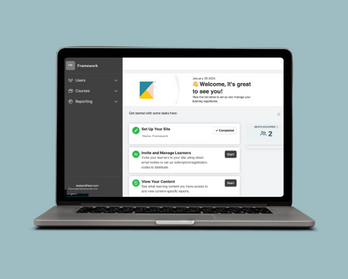Hurricanes Harvey, Irma, and Maria. The California wildfires. These natural disasters may not be dominating the headlines anymore, but people in affected areas are still reeling, and so is the insurance industry. By some estimates, it’s looking at a $150 billion hit.
The question is, will this drive up home insurance rates for everyone in 2018?
We’ve been reading contradictory news stories, some predicting double-digit increases, some none at all. Huh? So we called someone we could trust: William Kelsey, president of the Housing Partnership Insurance Exchange, a social enterprise of the Housing Partnership Network, just like Framework. We said, “Bill, help! And please cut to the chase if there is one.”
But cutting to the chase isn’t easy for a huge, profit-driven industry dealing with complex environmental questions and 50 state regulatory bodies. At any rate, here’s the general picture Bill drew for us:
- The insurance market is already overdue for an upward correction. So for most of us, it’s a good bet that home insurance rates will rise somewhat, but not enough to give you a heart attack.
- Homeowners in some, but not all, high-risk areas could face big increases or even problems getting insured at all.
- Along with — and because of — the recent disasters, there’s growing concern about what climate change may bring, which may soon put more upward pressure on rates.
Here’s an overview of the pressures and uncertainties that might affect your homeowners insurance budget in 2018, plus some tips on how you can respond to any rate hike you might face.
The industry is overdue for rate hikes
It’s hard to generalize about insurance premiums, because every state has its own regulatory body (often called the Department of Insurance), and they’re all over the map in terms of how much they control rates. Fire-plagued California, for one, is highly regulated: insurers must justify increases with data. That said, broad industry pressures do have implications for rates nationwide.
Here’s how it’s supposed to work: insurance companies put a little bit of your annual premium toward a reserve for the occasional catastrophe. They expect a year like 2017 maybe once every ten years, and that reserve covers it. But for nearly a decade, Bill says, they haven’t been setting aside enough. Instead, they been competing for market share — i.e. competing for your business — which has kept insurance rates on the low side.
“My analogy is that when fuel prices skyrocket, one airline says they’re going to raise prices, but then the others don’t, and they back down,” he says. “Now these catastrophes hit, and the insurance industry realizes, ‘Oh, we haven’t been putting money in the bank for the big events. We’re kind of behind the eight ball for money.’ Now the question is, will they raise rates, or will they be afraid of losing market share?”
Adding more upward pressure, says Bill, is that the back-to-back disasters have been a wake-up call for the industry’s hedge-fund investors too. “Since the Great Recession, some hedge funds have invested in the insurance market. This is the first year for hedge fund capital to experience catastrophic losses. Once they realize, ‘Wow, I can actually lose all my money in this deal,’ they’re going to ask themselves whether they want to keep putting capital into insurance.” The potential result is that insurers will be even more short on cash.
In hard-hit areas, insurers might redraw the risk maps
If your area was affected by a recent hurricane or fire, it might already be a designated high-risk zone, and you might already be paying more. In that case, you might not see much of an increase. In some areas of California, for example, the risk of wildfires is already built into premiums. But in newly affected areas, or where conditions are changing, it’s a different story.
In California, persistent drought and other factors are leading to new areas becoming classified as danger zones. The San Francisco Chronicle gives the extreme example of an El Dorado County homeowner surrounded by grasslands who, over four years, saw her annual homeowners insurance premium quadruple to $2,400.
Texas as a whole has always had high home insurance rates, thanks to its history of hurricanes and hailstorms. Still, Harvey’s reach was unprecedented, with a great deal of the flooding occurring outside of traditional flood zones.
“The insurance industry usually follows government flood maps,” says Bill, “but they can draw their own maps. There’s precedent that when a major event happens, insurance companies revisit what they define as high-risk areas. People who were considered outside of a flood zone might now be included in one, and they’ll need to buy supplemental insurance.” As we were saying earlier, though, there’s a chance competition will put a brake on this kind of expansion.
“After Superstorm Sandy, some insurance companies tried to limit windstorm coverage all the way up to Maine,” says Bill. “But others said, ‘We’re not going to force that on our clients,’ and after about a year this limitation disappeared.”
Some homeowners could find themselves unable to get insurance at all. Insurers have been known to pull out of high-risk markets. If this happens to you, contact your state department of insurance. Some states have “last resort” programs that will at least get you bare-bones coverage. A local homeownership advisor would also be a good resource.
Is climate change about to heat up your insurance premium?
Scientists are predicting more Harveys, Irmas, and who-knows-what in our planet’s future. That could mean more big insurance payouts — and higher insurance rates for everyone. The potential impact of climate change hasn’t really hit the market yet, Bill says, but “the jolt of these hurricanes and all could be the catalyst for that happening.”
Parts of the industry are talking about climate change, he says, although not as much as you might think. “The consumer end of insurance is unbelievably sales- and commission-oriented. These guys aren’t focused on what might happen in forty years. They’re just trying get their commissions for the year and hit their revenue numbers. Personally, I think there’s a disconnect there.”
But the reinsurance industry — which insures the insurers — does think long-term. And they’re paying a lot of attention to any data that points to what the future might hold. “These are centuries-old companies in Switzerland and Germany,” says Bill. “Reinsurers focus heavily on computer modeling, trending, and forecasting. They’re calculating, ‘If the sea level rises by four inches, then what used to flood every twenty years now floods every other year, and that’s a big problem for us.’”
If these reinsurers raise their rates, insurance companies will have to either absorb the cost or pass it along the cost to their customers.
What to do if your premium goes up — or your coverage goes down
1. When you renew, scour the fine print
Especially if you’re in a recently affected area. Insurers have been known to quietly change the terms, moving more risk to the homeowner rather than raising the premium. Apparently, they hope you won’t notice.
2. Shop around
Different insurers calculate risks in different ways, so another company’s formula might come out in favor of a lower rate. Plus, some companies offer new customers attractive rates, while loyal customers find their rates creeping up. (What the heck?!) They’re counting on you to not shop around.
Just make sure you’re comparing the same coverage and the same replacement value. You might not be happy about paying more for insurance, but you’ll be even less happy if you lose your home and can’t rebuild it. As Bill puts it, “I tell all my clients that you can always save money on insurance, but you won’t necessarily have enough coverage.”
Check your state insurance department for rate comparisons or consult an independent agent who sells policies under multiple carriers.
3. Ask your agent about discounts
Many companies offer discounts if you take certain steps to prevent damage to your home — steps that you should consider anyway. For example, installing hurricane shutters or fire-resistant roofing, or participating in a Firewise community program.




